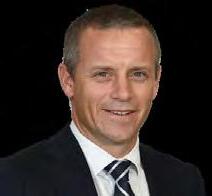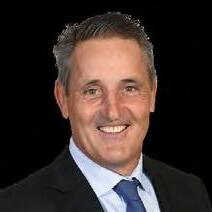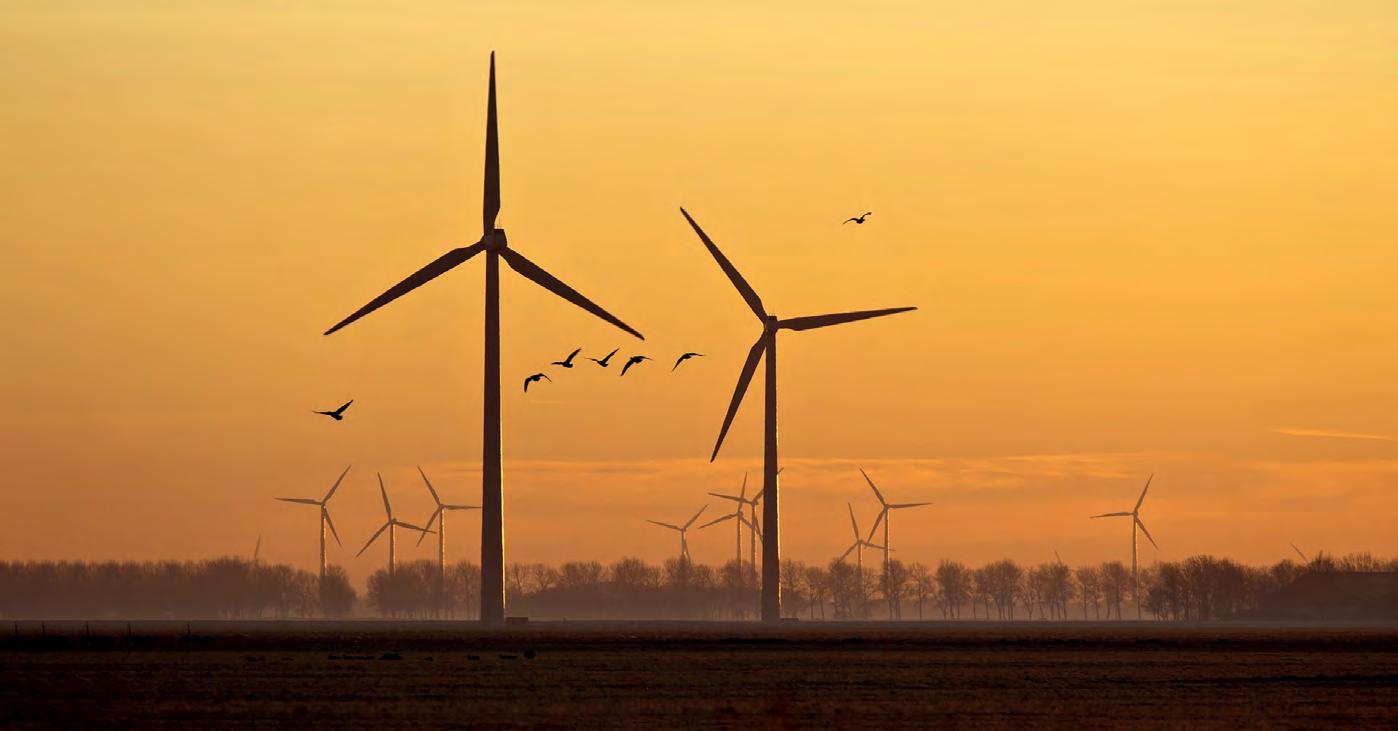
This is the copyright of Ninety One and its contents may not be re-used without Ninety One’s prior permission. Autumn 2023
Taking Stock

Contents Welcome to Taking Stock 1 Sangeeth Sewnath Winter is coming 5 Jeremy Gardiner Back to investment basics as ‘free-money’ era ends 9 Clyde Rossouw Do not be lazy when dealing with your cash investments 17 Paul Hutchinson Riding the tailwinds of a Chinese recovery 23 Hannes van den Berg and Rehana Khan Avoid getting emotional with your money 31 Malcolm Charles Welcome to Taking Stock
To determine their psychological state raises an additional question: how do we define happiness? There have been many studies undertaken, but the widely accepted formula is that happiness is equal to reality minus expectations. People are generally happy when the reality of their life is better than anticipated. Unreasonably high expectations are often a recipe for disappointment. This same formula can be loosely applied to the evaluation of investment outcomes.
Now consider that we know that the pain of a R1000 investment loss far outweighs the pleasure of a R1000 investment gain. So, in considering the reality component of the equation, investors may well be feeling unhappy when they peruse their quarterly investment statements. However, rather than be obsessed with (and disappointed by) short-term performance, investors should remember that their true investment reality is determined by their investment time horizon. Data from the Ninety One Investment Platform may surprise them – the average holding period for local discretionary investments is 8-10 years, while the average holding period for discretionary offshore investments is in the region of 20-25 years!
The unintended consequence of this short-term focus on performance is that investors unwittingly tend to be too risk averse, particularly with their long-term investments. Even in the case of income investments, our data shows that the average holding period for money market funds is greater than 12 months. The sad reality is that investors are not letting their money work hard enough for them.
The sad reality is that investors are not letting their money work hard enough for them.
Turning to expectations, many people still have this notion that one or two big investment ideas will make them massive returns over the short term. They lose sight of the fact that they should take a holistic view of their investment portfolio over the next 10-20 years. Often, buying into ‘the next big thing’ leads to crushing disappointment and much unhappiness!
A variety of global factors weighed on sentiment over the first quarter, which included rising tension between China and Taiwan, fears about the sustainability of the banking sector and extreme bond market volatility. The meteoric rise of AI and ChatGPT also grabbed the headlines. On the local front, greylisting and loadshedding dominated the news. These concerns have fuelled investor fears about the immediate future, again causing them to lose sight of their long-term investment goals.
These concerns have fuelled investor fears about the immediate future.
Challenging markets have translated into investor flows slowing dramatically, as shown in the ASISA1 net flows into collective investment schemes for 2022. The total net flows for the year (excluding money market funds) were approximately R12 billion. During the bull markets of 2009 and 2014, net flows totalled more than R100 billion per annum!
Sangeeth Sewnath Deputy Managing Director

Taking Stock
Document title here 2 1
After 3 years of difficult market conditions, investors would be forgiven for feeling despondent. But is this assumption about their state of mind, correct?
1. A ssociation of Savings and Investment South Africa.
Welcome
But back to reality. Easy as it is to feel despondent about news headlines, the 12-month performance numbers have come through quite strongly, particularly in our Quality range, in which many clients are invested. Over the year to end March, the Ninety One Opportunity Fund returned close to 12%, beating peers by almost 7%. This is not far off the stellar 20-year track record of the Fund which generated a return of more than 13% per annum (8% per annum after inflation). 2
Interestingly, the FTSE/JSE All Share Index delivered 24% per annum over the 3 years to the end of March. However, this performance includes the post-Covid recovery but excludes the big drawdown during the pandemic crisis. Many investors, however, may have missed the uptick because they sold out when markets collapsed. Even including the Covid period, 5-year returns for SA equities are at a respectable 10.4% per annum, comfortably above cash.
Many investors, however, may have missed the uptick because they sold out when markets collapsed.

The big question then is where this money went instead. Household bank deposits are sitting at R1.63 trillion, mostly held for far longer than is appropriate for short-term cash investments. This means that investors are not maximising the return potential of their conservative cash holdings. Be sure to read Paul Hutchinson’s argument for an alternative to ‘lazy’ money, which along with the 12-month fee reduction we have introduced for the Ninety One Diversified Income Fund , should help you convince your clients to make their money work harder for them. 2. S ource: Morningstar, dates to 31 March 2023. Performance figures are calculated NAV-NAV, net of fees, in rands, A class. For more information, visit the Ninety One Opportunity Fund page on our website.
I want to conclude by reminding you that you should not lose sight of the investment value you add to your clients’ portfolios over time, especially during tough periods when returns are lower than expected. We conducted research to consider this contribution and tracked the value-add across two axes. Firstly, advisors must ensure that their clients invest according to their risk profile. Most investors have a lower risk tolerance than they should have, given their investment time horizon. The difference between a low-risk and a high-risk portfolio can vary anywhere between 4 and 6% per annum, so the quantum of relative out- or underperformance can be staggering over time. The second axis of value lies in the funds you choose for your client based on their risk profile, where again, fund performance can vary between 4 and 6% per annum. So as an advisor, you should be comforted by the fact that your value-add could be more than 8% a year for your clients, provided you have correctly analysed their risk profile and chosen the correct fund mix according to their risk profile.
In summary, do not underestimate how much you contribute to your clients’ happiness, either by making sure that their reality improves through the investment outcomes they receive or by correctly managing their expectations.
Happy investing!
Sangeeth Sewnath Deputy Managing Director
Welcome
Welcome 3
South Africa is not alone. The world is a tricky place at the moment.
In the US, there is the very real possibility that next year will see two octogenarians (one with an ever-growing list of legal challenges) fighting it out for a chance of a second term as president, in what must be one of the world’s most stressful jobs. And if one of them gets it, they will be in their mid-eighties when they finish their term.

This is, of course, good news, as it says something about the way we are ageing. We’re all going to live longer, so it makes sense that we work longer – even into our eighties. However, it is in stark contrast to the other side of the planet, where French protesters are burning down Paris because they refuse to move the retirement age from 62 to 64. This has to be implemented, otherwise their pension system is going to go broke.

Winter is coming 6
Winter is coming 1
Jeremy Gardiner Director
A few hours from there the war in Ukraine rages on. Vladimir Putin hoped to announce victory at his annual May 9 victory parade last year, yet a year later the date passed again with a nervous unease hanging over both Moscow and Kiev. Also, increasingly uneasy are the Western taxpayers, and Putin knows this. What started as a good idea – to save Ukraine – was only meant to last a couple of weeks or months, but as we head into the second year, not all Western voices are singing in unison. Putin knows that the US, Europe and UK all have elections next year and many opposition parties are campaigning to cut spending support for Ukraine, so Putin is hanging in there, waiting for war fatigue to set in.
Many opposition parties are campaigning to cut spending support for Ukraine.
South Africa’s bizarre non-aligned neutrality on the subject has seen The Economist magazine shifting us from “neutral” to “Russia leaning”, and understandably so. They won’t be alone. Whether or not one likes the West is not the point. NATO countries are our biggest trading partners – they buy our goods, and that creates employment. Create jobs in South Africa and you solve a whole host of other problems like crime and poverty. Destroy jobs and you exacerbate all these problems.
On the subject of anti-West sentiment, there’s no doubt the BRICS group as we know it is going to expand in size. As interest in that group rises, so too does talk of de-dollarisation. While there is no doubt that one day an alternative currency to the dollar will gain traction, to call the death of the dollar now (or any time soon) is premature. Remain diversified, and if and when an alternative arises, you can gradually upweight, but don’t expect it any time soon.

To call the death of the dollar now (or any time soon) is premature.
South Africa is currently in the throes of massive job-shedding as a result of state capture-induced load-shedding. We therefore simply cannot afford the additional jobs carnage that will come our way if the Americans and the Europeans decide to cool towards us from a trade perspective.
So, as our country heads into what promises to be yet another ‘discontented’ winter there is some respite.
The world is recovering. Inflation has peaked. Interest rates should have peaked but haven’t (quite yet), and that will bring some relief to our economy and to our battered, oversold currency.
Global contagion seems unlikely.
In terms of the US banking crisis, and potential global contagion, while you can never say it’s impossible, it’s apparently unlikely. There seems to be general consensus amongst analysts that this is not 2008, that the authorities moved fast and effectively stemmed wider contagion.
On the electricity front, according to a “well-placed source within Eskom”, Business Day tells us that winter will be tougher. We use more heaters, and we need lights more hours in the day, so demand increases. While Eskom cuts back on maintenance during winter, the shortfall will be larger, and we will see more load-shedding.
Apparently, increased load-shedding doesn’t mean the grid is closer to collapse. The good news is that apparently there is a system operator somewhere in the bowels of the organisation whose job it is to ensure that the grid doesn’t collapse entirely.
You can rest comfortably because apparently our ‘system operator’ is world class, and so good in fact that we have apparently been coaching the Europeans on how to deal with large system deficits.
Hope that makes you sleep better at night.
Winter is coming
7 1. B RICS refers to Brazil,
Winter is coming
Russia, India, China and South Africa.
Clyde Rossouw Co-Head of Quality

The fast view

Post the Global Financial Crisis, we experienced an era of cheap money, which distorted the cost of capital and favoured excessive risk-taking.
The return of persistent inflation has forced central banks to hike interest rates aggressively, bringing an end to ‘free money’.
M any businesses had positioned themselves for a low-rate environment and now that the tide has turned, some are ill-prepared for higher rates.
We are avoiding these businesses, rather investing in select high-quality healthcare and consumer, semiconductor, and leisure companies, amongst others.
Despite tough conditions, high-quality businesses with exceptional fundamentals should come into their own.
Back to investment basics as 'freemoney' era ends 2
10
9
as ‘free-money’ era ends
When I started my career in the investment markets in 1995, high positive real interest rates were the norm. That all changed when the Global Financial Crisis hit during 2008, ushering in the era of easy money. For the next decade and a half, markets operated within a false equilibrium, where near zero or negative interest rates and quantitative easing distorted the cost of capital, which in turn encouraged excessive risk-taking. When economies and markets tanked during the pandemic, policy makers provided massive stimulus measures to help alleviate tough financial conditions. But persistent inflation has brought an end to the ‘new normal’, as central banks across the world have been forced to hike interest rates aggressively to restore price stability.
During restrictive financial conditions, financial ‘accidents’ are more likely to occur. Many businesses had positioned themselves for a low-rate environment and now that the tide has turned, some are ill-prepared for higher rates. Non-profitable technology companies have come under pressure. We have also witnessed turmoil in the global banking sector, with the collapse of Silicon Valley Bank and Signature Bank, and the bailout of Credit Suisse.
During restrictive financial conditions, financial ‘accidents’ are more likely to occur.
Fed sticking to its guns
Despite these developments, the Federal Reserve (Fed) is committed to raising rates to lower inflation. It has been able to stick to its guns by making additional funding available to financial institutions to prevent banking liquidity/solvency issues.
Rising interest rates have been a major headwind for markets. Investors continue to focus strongly on when the US will reach the point at which inflation and the federal funds rate will converge. While global inflation has been a real worry, the health of corporate earnings deserves closer scrutiny.
Back to investment basics as ‘free-money’ era ends
A gloomy economic outlook
Manufacturing activity has been contracting sharply in the US, reflecting the gloomy economic outlook. The bond market is also signalling that it is expecting a significant downturn in economic activity this year, as evidenced by long-term rates being much lower than short-term rates. The difference between 10-year rates and 3-month rates is the steepest it’s been since 1981.
Cyclical businesses are feeling the pressure. As companies start losing volumes, their pricing power will suffer, impacting their earnings growth. While a recovery in economic growth in China could provide some relief, it is going to be a tough year for company earnings.
How deep is the earnings trough?
Average global sector earnings percentage change during previous earnings recessions
Source: Citi Research, Global Equity Strategy, October 2022, Market: MSCI ACWI. Global EPS recession dates: 31 Jan 2008 – 29 Jan 2010; 27 Feb 2015 – 31 Oct 2016; 31 Mar 2020 – 30 Nov 2020.
The chart shows that during difficult market conditions the energy, financials, materials and consumer discretionary sectors typically experience a far greater hit to profits compared to other parts of the market. It’s not to say the energy sector will experience such violent moves, but we are avoiding these sectors in our portfolios. We have exposure to high-quality healthcare and consumer staples where earnings are more resilient during economic downturns. But these sectors generally have lower levels of growth, so investing in other high-quality opportunities that offer long-term growth is key.
12 11 Back to investment basics
-80 -70 -60 -50 -40 -30 -20 -10 0 10 Healthcare Consumer staples Utilities Communication services IT Market Industrials Consumer discretionary Financials Materials Energy High-quality sectors
Back to investment basics as ‘free-money’ era ends
Semiconductors – attractive structural growth trends
Semiconductors – also known as chips – are the brains of all modern electronics. We find them in smartphones, tablets, PCs, data centres, autos and more. Semiconductors have attractive structural growth trends – with some predicting the industry will top US$1 trillion by 2030.1 But because of inherent cyclical risks, it is important to seek out companies with sound business fundamentals and compelling long-term growth prospects.
Semiconductors have attractive structural growth trends – with some predicting the industry will top US$1 trillion by 2030.
In Europe, we like ASML, which is a key portfolio holding. It focuses on the lithography step of the chip-making process, which is almost like a high-tech photocopier. ASML’s extreme ultraviolet light (EUV) machines – about the size of a single-decker bus, at a cost of US$150 million – have become precisely what chip makers need to print smaller circuits while increasing capacity and speed. In the EUV era, ASML is no longer just a dominant supplier, but rather a monopoly, created through technological brilliance and innovation, as opposed to the more traditional mergers and acquisitions route.
The company has an excellent credit rating, and its balance sheet is healthy.
The world’s largest contract manufacturer of chips, Taiwan Semiconductor Manufacturing Company (TSMC), is another portfolio holding in this growth sector. The company posted strong financial earnings earlier this year. Even though the chip industry is experiencing a cyclical downturn, TSMC still expects some growth in 2023. Its long-term growth profile remains firmly intact. Against a backdrop of difficult financial conditions, TSMC maintains a strong financial position. The company has an excellent credit rating, and its balance sheet is healthy. TSMC has not needed external funding to finance organic growth.
Experiences making a strong comeback
Coming out of the pandemic, the growth in the leisure sector has been robust, reflecting people’s pent-up demand for holidays. Consumers are choosing again to invest money in experiences over goods, which has benefited the leisure industry across the board. This year, we are also seeing a recovery in Asia’s travel industry, particularly from the Chinese, with the lifting of Covid restrictions. The devastating impact of the pandemic wiped out many players in the hospitality industry, so it’s not quite ‘business as usual`. Although the industry still has its challenges, there are good valuations and growth on offer for discerning investors despite recent gains.
Booking holdings is well positioned to capitalise on the recovery in the leisure sector.
Booking Holdings, an industry-leader in online travel, has been a mainstay in our portfolios. The company is well positioned to capitalise on the recovery in the leisure sector, and it has provided an upbeat forecast for the year. Room nights booked in January were 26% higher than 2019 levels, and the online giant is expecting percentage growth for gross bookings in the low teens compared with 2022 levels.
14 13 Back to investment
as
basics
‘free-money’ era ends
1. M cKinsey, April 2022.
Back to investment basics as ‘free-money’
era ends
In conclusion
Now that the ‘free-money’ era has ended, it’s time to dust off the old investment playbook and revisit the good, old-fashioned principles of investing. We are going back to a world where fundamentals matter. Valuation and energy were last year’s theme, but we don’t believe they will drive the stock market performance this year. The problem with businesses that are merely cheap is that their valuation does not protect you when the fundamentals change for the worse. Cheap shares can be very risky in a difficult market environment.
We expect balance sheets and earnings to take centre stage this year. Geopolitical uncertainty will prevail, but inflation is likely to moderate as demand cools and companies and individuals repay their debt. The global companies we hold are well positioned to navigate the tough macro environment. Their strong pricing power and low debt levels are a powerful buffer against restrictive financial conditions. The fundamentals of these high-quality companies remain strong. We are confident about the runway for growth and the ability of these companies to compound their cash flows. Despite tough conditions, there is money to be made – high-quality businesses with exceptional fundamentals should come into their own.

Two decades at the helm
Co-Head of Quality, Clyde Rossouw, has had an illustrious career in the investment industry, spanning close to 30 years. Ninety One Opportunity Fund investors have benefited from Clyde’s depth of experience. He has steered the Fund successfully through choppy investment waters since taking up the reins as portfolio manager in 2003. The Fund has consistently beaten inflation. Over the last 20 years, it has generated an annualised return of more than 13% for investors.
Source: Morningstar, dates to 31 March 2023. Performance figures are calculated NAV-NAV, net of fees, in rands, A class. For more information, visit the Ninety One Opportunity Fund page on our website.
15
The global companies we hold are well positioned to navigate the tough macro environment.
Paul Hutchinson Sales Manager

The fast view

South Africans are increasingly hoarding cash in retail bank accounts and money market unit trust funds.
H owever, the average retail investor’s holding period exceeds 12 months, with the result that they are not maximising the return potential of their conservative cash holdings.
Conservative investors with a holding period of more than 12 months should consider a flexible fixed income fund, like the Ninety One Diversified Income Fund , as an alternative for at least a portion of their cash holdings.
The Ninety One Diversified Income Fund has a proven long-term track record of generating real returns (participating) and managing downside risk (protecting).
Do not be lazy when dealing with your cash investments 3
18
There is a staggering amount of savings parked in retail bank accounts and money market unit trust funds. The South African Reserve Bank’s BA900 economic returns’ data shows that household bank deposits totalled R1.63 trillion at the end of December 2022 – which is significantly higher than the long-term average – and up more than R90 billion over the past year. At the same time, retail investor assets held in money market unit trust funds amounted to a further R190 billion, at 31 December 2022.
Data shows that household bank deposits totalled R1.63 trillion at the end of December 2022.
Interestingly, we then analysed the quarterly net flow statistics of the Association of Savings and Investment South Africa to establish the average retail investor’s holding period. Over the last 5 years, it has exceeded 12 months, increasing to 16+ months last year. This suggests that many money market investors are not considering how best to maximise the return on their conservative investments. In an environment where money market investments have delivered negative real returns after tax and inflation for the last few years, this is a missed opportunity, as can be seen in Figure 1.
Figure 1: South African inflation, interest rates and money market returns
Figure 1 shows how the rolling 12-month return of the average money market unit trust fund tracks the repo rate, peaking when the repo rate peaks and bottoming when the repo rate bottoms. Given that the Monetary Policy Committee of the South African Reserve Bank recently increased the repo rate by a further 50 basis points to 7.75%, we can therefore expect the rolling 12-month return for the average money market fund to trend towards 7.75%.
Importantly, however, over the long term, cash investments have delivered a pre-tax return of just 1% above inflation. Investors parking their conservative investments in the money market are effectively standing still over time.
Investors parking their conservative investments in the money market are effectively standing still over time.
What to do, what to do?
Money market and bank deposit investors with a holding period greater than 12 months should consider conservative multiasset income funds that target (and have a history of delivering) cash-plus returns at limited volatility, i.e. no negative returns over shorter periods – for example 3 months – through various interest rate cycles.
These flexible fixed income funds attempt to exploit a multitude of yield-enhancing instruments to diversify risk and enhance portfolio returns, investing in long- and short-dated bonds (both government and investment-grade corporate), inflation-linked bonds, debentures, fixed deposits, preference shares and listed property. For example, to diversify risk, the Ninety One Diversified Income Fund ’s exposure to banks (approximately 27%) is not limited to just one bank but spread across the big four.
20 19
your
Do not be lazy when dealing with
cash investments
0% 2% 4% 6% 8% 10% 12% 14% Feb-01 Oct-01 Jun-02 Feb-03 Oct-03 Jun-04 Feb-05 Oct-05 Jun-06 Feb-07 Oct-07 Jun-08 Feb-09 Oct-09 Jun-10 Feb-11 Oct-11 Jun-12 Feb-13 Oct-13 Jun-14 Feb-15 Oct-15 Jun-16 Feb-17 Oct-17 Jun-18 Feb-19 Oct-19 Jun-20 Feb-21 Oct-21 Jun-22 Feb-23 Rolling 12-month CPI SA repo rate Average money market fund Periods of real negative returns
Source: Ninety One Benchmark Database.
Do not be lazy when dealing with your cash investments
Do not be lazy when dealing with your cash investments
Ninety One Diversified Income Fund: designed to participate and protect
Within this peer group of flexible fixed income funds, the Ninety One Diversified Income Fund is a comprehensive and differentiated conservative investment solution. At its core, the Fund seeks to both generate real returns (participate) and manage downside risk (protect). To date the Fund has: Provided a consistent total return above cash/inflation over time, with some correlation to the bond market when the bond market outperforms cash and little to negative correlation to the bond market when it underperforms Avoided quarterly capital drawdowns and eliminated 6-monthly drawdowns completely
The benefit of the Fund’s differentiated, flexible mandate is not just evident during rate-hiking cycles, but importantly through the cycle. Figure 2 illustrates the Fund’s ability to make use of the myriad investment opportunities to diversify risk and enhance return. This flexibility has proven attractive and beneficial to investors.
Figure 2 compares the return of the Ninety One Diversified Income Fund against that of the FTSE/JSE All Bond Index (ALBI) for the 12 years since March 2011, during periods when the ALBI outperformed cash and when the ALBI underperformed cash.
Observations
When the ALBI outperforms cash, which it does on average by 6.9% p.a., the Fund participates in these rallies, capturing almost a third of this outperformance.
When cash outperforms the ALBI, the Fund protects the downside, delivering a positive 0.9% p.a. above cash.
As a result, over the full period, the Fund provided an attractive return of 1.4% p.a. above cash.
Impressively, the Fund has also outperformed both the average money market unit trust fund and its benchmark, the STeFI Composite (which is a proxy for bank deposits) every calendar year over the last 10 years. This demonstrates the experience and skill that Ninety One has built in managing income investments.
In summary, the Ninety One Diversified Income Fund has delivered upside exposure with downside protection, in line with its dual ‘participate and protect’ objective. Given market valuations and the compelling income on offer, we anticipate that the Fund will continue to deliver attractive returns relative to cash and fixed deposits.
And finally, we recently announced a 1-year 11% fee reduction for the platform fee class of the Ninety One Diversified Income Fund. We have reduced the H-class annual management fee from 0.45% (ex VAT) to 0.40% (ex VAT), effective from 1 April 2023 to 31 March 2024. This is to further encourage investors sitting in cash to switch to a fund that is well placed to assist them in achieving more meaningful cash-plus returns over time.
Source: Ninety One and Bloomberg. Returns are based on a lump sum investment, NAV based, inclusive of all annual management fees but excluding any initial charges, gross income reinvested, A class. Fees are not applicable to market indices. Where funds have an international allocation, this is subject to a dividend withholding tax, in South African rand. Data from 31 March 2011 to 31 March 2023. For more information, please visit the Ninety One Diversified Income Fund page on our website.
22 21
Figure 2: Participating and protecting: average rolling 12-month excess returns over cash
2.0% 0.9% 1.4% 6.9% -1.5% 1.9% -2% -1% 0% 1% 2% 3% 4% 5% 6% 7% 8% Ninety One Diversified Income Fund (net) ALBI Total Return Rally Sell-off All Participate Protect Cash-plus returns Do not be lazy when dealing with your cash investments
Riding the tailwinds of a Chinese recovery
The fast view
We expect a global slowdown to take root over the second half of the year, with developed markets the hardest hit.
China’s economy is recovering after lifting its Covid lockdowns. Stimulus measures and the reopening of its economy are underpinning growth.
While we’ve tilted our portfolio more towards defensives due to the challenging growth backdrop, a recovering China offers us exposure to attractive cyclical opportunities – both onshore and offshore.

O ngoing load-shedding and poor growth prospects are weighing on many of South Africa’s domesticoriented companies. Within this challenging environment, we are highly selective, gravitating towards companies with earnings resilience.

While we are experiencing tough market conditions, we believe the current environment will provide us with attractive investment opportunities to create longterm wealth.

24
4
Hannes van den Berg Head of SA Equity & Multi-Asset, 4Factor
Rehana Khan Deputy Head, SA Equity & Multi-Asset, 4Factor
Riding the tailwinds of a Chinese recovery
Tighter financial conditions have weighed heavily on equity markets. Last year was all about inflation, the interest-rate hiking cycle and how long it would take to peak. This year, investors are strongly focused on the growth outlook. But the full impact of high interest rates and the withdrawal of credit on growth and earnings expectations is yet to be felt. We expect a global slowdown to take root over the second half of the year, with developed markets the hardest hit.
China rebound after lockdown slumber
While the West has been cooling its economy to bring inflation down, China’s economy is recovering after lifting its Covid lockdowns. Stimulus measures and the reopening of its economy are underpinning growth. Over the first quarter of 2023, China’s economy expanded 4.5% (year-on-year), supported by strong growth in exports and infrastructure investment, and a bounce back in retail sales and house prices. Pent-up consumer demand is helping the economy rebound, thanks to excess household savings that accumulated during the Covid lockdowns.
While inflation is still sticky in many parts of the globe, both consumer and producer price inflation remain mild in China. This means that policy makers have more room to introduce additional stimulus measures to aid the country’s economic recovery – should the need arise. The Chinese authorities have signalled that they are relaxing their regulatory crackdown on big business, which for now has helped to create a more favourable investment climate.
Tapping into consumption-led growth
As active managers, we look to balance our defensive positions in the Ninety One Equity Fund with cyclical opportunities. While we’ve tilted our portfolio more towards defensives due to the challenging growth backdrop, a recovering China offers us exposure to attractive cyclical opportunities – both onshore and offshore. We tend not to focus on where stocks are listed but rather do a bottom-up assessment of where companies generate their revenues. Many of these global players are well positioned to continue receiving positive earnings revisions from better fundamentals in Asia.
A recovering China offers us exposure to attractive cyclical opportunities – both onshore and offshore.
We believe pent-up demand from Chinese consumers should benefit sectors such as luxury goods, financial services and retail. Luxury goods maker, Richemont – which is a key portfolio holding – is set to continue seeing positive earnings revisions as Chinese consumers spend excess savings. Recent results from LVMH and Hermès showed strong demand from Asian consumers.
Pent-up demand from Chinese consumers should benefit sectors such as luxury goods, financial services and retail.
Our positions in Alibaba (e-commerce giant), Bosideng International (China’s largest down clothing company) and Chongqing Fuling Zhacai (food firm operating in the Chinese appetizer industry), give us attractive exposure to consumer-led growth in China. Food services group Bidcorp and brewing giant Anheuser-Busch should also benefit from the ‘reopening trade’ as Asian consumers travel the globe and visit restaurants. The cost of sales and margin pressures that Anheuser-Busch experienced over the last 2 years are set to dissipate, and we anticipate an improvement in the company’s earnings forecasts above market consensus. Over the next 12 months, we expect Bidcorp to continue to enjoy positive earnings revisions, as the company profits from market share gains and increased efficiency.
26 25 Riding the tailwinds of a Chinese recovery
Source: Bloomberg, Citi Research, Ninety One, 31 March 2023. 25 30 35 40 45 50 55 60 65 70 Apr-13 Oct-13 Apr-14 Oct-14 Apr-15 Oct-15 Apr-16 Oct-16 Apr-17 Oct-17 Apr-18 Oct-18 Apr-19 Oct-19 Apr-20 Oct-20 Apr-21 Oct-21 Apr-22 Oct-22 Manufacturing PMI Services PMI Construction PMI
Figure 1: China re-opening is providing opportunities Chinese economic recovery at multiple levels
Riding the tailwinds of a Chinese recovery
While Chinese consumers are spending more on leisure and luxury items, we anticipate that they will channel some of their excess savings into investments. The property market has stabilised, and investors are looking to grow their wealth by also investing in financial markets – not just real estate. To this end, we hold a position in a leading Chinese internet financial services platform, East Money Information Co. The firm provides securities, financial e-commerce, financial data and internet advertising services.
Tencent enjoying a recovery
With policy makers focusing on promoting growth in China, regulatory interventions affecting businesses (particularly technology) have eased in recent months. Consequently, the operating environment for technology companies has improved materially. Tencent has secured major video game approvals, which has allowed the Chinese tech group to build a strong gaming pipeline. This should support revenue growth over the next 1-2 years. Thanks to better economic growth in China, online advertising revenue has turned positive again, and we expect this momentum to carry through into 2024.
Tencent has secured major video game approvals, which has allowed the Chinese tech group to build a strong gaming pipeline.
We do not have a direct holding in Tencent but have a material exposure to this business through our overweight positions in Naspers and Prosus. Both companies are strongly focused on improving efficiencies and turning their loss-making businesses around by 2025 (classifieds, payments, fintech, food delivery and edtech). Share buybacks are also supporting Naspers and Prosus as management attempts to address the steep valuation discount.
Riding the tailwinds
of a Chinese recovery
Global diversified miners benefiting from tight commodity supply
BHP Group, with its large bias towards iron ore and copper, is well positioned for the demand uptick in China, as the country restocks its supply chains. Increased infrastructure spending demand is benefiting the global diversified miner, which is a top ten holding in the Ninety One Equity Fund
Selective exposure to SA Inc. stocks
‘SA Inc.’ stocks (banks, retailers, insurers and industrials) are trading at valuation multiples well below their long-term averages. Ongoing load-shedding and poor growth prospects are weighing on many of the domestic-oriented companies. Tough economic conditions such as high interest rates, and rising fuel and food costs have eroded the spending power of South African consumers, making it difficult for some local players to generate sustainable earnings. Within this challenging environment, we are highly selective, gravitating towards companies with earnings resilience.
28 27
1.8 2.0 2.2 2.4 2.6 2.8 3.0 3.2 3.4 20 22 24 26 28 30 32 34 36 38 Jan-22 Feb-22 Mar-22 Apr-22 May-22 Jun-22 Jul-22 Aug-22 Sep-22 Oct-22 Nov-22 Dec-22 Jan-23 Feb-23 Mar-23 Consensus EPS Share price
Figure 2: BHP Group our preferred diversified miner Improved earnings revisions profile Source: Ninety One, Bloomberg, BHP Group, Macquarie, March 2023.
BHP Group share price Consensus EPS FY'24 (RHS)
We continue to have a healthy allocation to select South African banks where earnings revisions remain positive, and valuations are very attractive. We have, however, largely sold our positions in discretionary retailers. Our exposure to local defensive businesses is mainly expressed through our holding in Shoprite, which continues to take market share with its dominant and growing presence across all the LSMs1 in South Africa – from Usave at the low end to Checkers at the upper end. The group’s leading supply chain is a key differentiator in the South African market and this, coupled with ongoing innovation, is supporting its growth trajectory in a tough environment.
We also like OUTsurance and Sanlam because of their attractive earnings profiles. Coming into 2023, OUTsurance is offering doubledigit top line growth, thanks to improved underwriting margins – both in South Africa and Australia. Continued market share gains are also benefiting the Australian business.
We also like OUTsurance and Sanlam because of their attractive earnings profiles.
A shift to global defensives
On the global front, we have materially increased our exposure to more defensive companies at the expense of cyclicals and growth stocks. Given increased risks of earnings disappointments, we have a preference for companies with more stable and sustainable earnings growth profiles, underpinned by strong cash flows. For example, within healthcare, our holdings include Elevance Health, United Health Group and Thermo Fischer. Despite challenging economic conditions in developed markets, these companies are still able to deliver double-digit earnings growth and attractive dividend yields. We have also increased exposure to defensive energy utilities with growing renewables businesses, such as NextEra Energy and Iberdrola.
The portfolio has a large active overweight position in gold miner, AngloGold Ashanti. Earnings expectations are being revised significantly higher on the back of a rising gold price. On the offshore side, we have exposure to Barrick Gold Corporation. We believe we are close to a peak in interest rates, which should benefit gold.
Conclusion
The effects of tighter monetary and financial conditions will take time to be fully reflected in growth and earnings expectations. With the developed world facing a growth slowdown, we are positioned to capture the cyclical opportunities that a resurgent Asia offers. Markets will likely remain volatile, with China facing a bumpy road to recovery. To mitigate risks and to capitalise on growth opportunities, we maintain a balance of exposures to defensive and cyclical stocks. Keeping an eye on changing earnings and growth expectations will be key.

29
of
Riding the tailwinds
a Chinese recovery
1. Living Standards Measure (LSM) is a tool used to segment the South African market,
to
grouping people according
their living standards.
Avoid getting emotional with your money 5
Malcolm Charles Portfolio Manager, SA Fixed Income

The fast view Load-shedding, poor economic growth and soaring interest rates are weighing on investor sentiment.
While you can’t wish away the steady stream of bad news, what you can do is avoid getting emotional with your investments.

Fortunately, it’s not all bad news, there’s some improving news too. Eskom is on a better financial footing, the restructuring of the power utility is gathering pace, and the inflation and interest rate outlook has become more favourable.
SA government bond yields remain attractive versus emerging market bond yields, domestic cash rates and inflation, more than compensating investors for the risk they assume.
We are constructive on the outlook for emerging markets and expect attractive returns from SA fixed income assets over the remainder of the year.
32
Avoid getting emotional with your money
South Africa facing many challenges –are there any prospects?
There’s a lot to be downbeat about in South Africa – you can take your pick from load-shedding, political uncertainty, poor economic growth and the collapse of many state-owned enterprises – to name a few. While you can’t wish away the steady stream of bad news, what you can do is avoid getting emotional with your investments.
It’s easy to lose perspective when you are in the middle of a challenging situation over which you don’t have control. Feeling powerless to change adverse external circumstances can drive you to ‘want to do something’. When it comes to your money, panic selling could cost you dearly.
Journeying back in time can be a useful exercise when you’re facing tough times. Most South Africans would agree that 2015-2016 was a dark time for the country. In December 2015, the shock dismissal of then-Finance Minister Nhlanhla Nene sparked a market sell-off. During this tumultuous period, the outlook for South Africa was dismal as political uncertainty and allegations of state capture weighed heavily on the country. Then-President Jacob Zuma was also pushing for a massive Russian nuclear project, which would have been catastrophic for SA if it had gone ahead.
Sentiment was overwhelmingly negative in SA – very similar to now. Inflation and interest rates were on the rise here and globally. The South African Reserve Bank (SARB) hiked its repo rate in January and March of 2016 before pausing. Investors were emotional and panic-stricken. The rand plunged to almost R17 to the US dollar. But a year later, it was back below R13.70. For those who remained invested, government bonds gave a 15.5% return in 2016.
The lesson here is: don’t get emotional with your money. Sure, load-shedding and political mismanagement can leave you feeling emotional, but when it comes to your money keep a cool head. Fortunately, it’s not all bad news, there’s some improving news too.
Progress with rebuilding state institutions
During Ninety One’s interactions with clients around the country this year, a key concern that we kept hearing is that President Cyril Ramaphosa has done nothing since taking the highest office in the country. While the President hasn’t done as much as we’d hoped, the strong turnaround of the South African Revenue Service (SARS) and progress with rebuilding the prosecuting authorities and the Special Investigating Unit should be recognised as tangible achievements since he took over the reins. Some R12.9 billion has been recovered from plea bargains and other admissions, thanks to the State Capture Commission. While arrests have taken place, prosecutions have been slow. We need to see meaningful convictions of state capture/corruption to get off the greylist.
Eskom on a much better financial footing
Eskom represents the biggest challenge to post-democratic South Africa. Unfortunately, load-shedding will remain a drag on our economy for at least 24-36 months, and this winter is going to be really tough. Understandably, the problems at Eskom are also a big worry for many of our investors. The good news is that the government has agreed to repay R254 billion of Eskom’s debt, which should provide space for the power utility to focus on operations. National Treasury has also put strict conditions in place to prevent irregular and wasteful expenditure.
34 33 Avoid getting emotional with your money
When it comes to your money, panic selling could cost you dearly.
49 46 37 15 49 32 29 26 22 20 0 20 40 60 80 Mar-23Mar-24Mar-25Mar-26Mar-27 Capital Interest R78bn R66bn R40bn
Figure 1: Eskom debt relief … Enough to relieve Eskom of their debt obligations for 3 years
Source: Eskom, National Treasury, February 2023.
The restructuring of Eskom is gathering pace. In time, Eskom’s main asset will be the transmission company, with new energy generation increasingly in private hands. Tax breaks for renewable energy installations will also encourage more businesses to go off the grid or reduce their reliance on Eskom power. Businesses will now be able to deduct 125% of the cost of projects in the first year – which may be a game-changer, as was the case in Vietnam when it adopted similar tax incentives.
Private businesses are planning to add a further 18GW in renewable projects.
Private businesses are planning to add a further 18GW in renewable projects. Transmission capacity may now also be built by these renewable energy companies, creating a pathway to free SA from load-shedding in a few years. Economic growth will be a battle while load-shedding continues to cripple many businesses. Weak or no growth will also have an adverse effect on government finances because of the direct impact on revenue. So, we need to see new Electricity Minister, Kgosientsho Ramokgopa, come with tangible solutions to get us through the next 2-3 years while new generation capacity is being built.
Inflation picture improving
Like many other nations, South Africans have faced the ‘double whammy’ of rising prices and soaring interest rates. Fortunately, this horrible headwind seems to be abating – within the next quarter, we could see the SARB hitting the pause button on rate hikes. Inflation is coming down globally, with data pointing to moderating inflation risks in the US and other parts of the world.
We expect SA consumer price inflation to begin falling in the second half of the year, reaching 5% in the first quarter of 2024. This forecast already takes into account elevated and sticky food and fuel prices, which we are currently experiencing in South Africa. We remain of the opinion that we are close to the end of the ratehiking cycle. Given a more favourable inflation and interest rate outlook, we believe the environment will be supportive for local fixed income assets.
What can we expect from SA income funds?
Emotional investors who are concerned about the country’s challenges may have the perception that SA bonds are best avoided. But when it comes to investments, it’s important to understand what’s in the price. We believe SA government bond yields more than compensate investors for the risk they assume. Our government bond yields remain attractive versus emerging market bond yields, domestic cash rates and inflation. SA bond investors can earn a yield above 11.5% on 10-year government bonds, which is well above inflation.1
Bond investors can also take comfort that government finances remain healthy. SARS has materially improved its revenue collection. Thanks to the commodity windfall, government revenue collections have exceeded budgeted revenue since March 2021. Importantly, the government has not gone on a spending spree but banked some of this money. And the good news for bond investors is that National Treasury has reduced its bond issuance for this fiscal year, which represents a tailwind for the bond market.
Figure 2: The power of income All Bond Index returns for the last 6 years
Source: Ninety One, Bloomberg, as at 31 December 2022.
The income protection inherent in SA government bonds has helped to shield investors from price weakness. Over the past 6 years, income has been the biggest contribution to SA bond returns, as opposed to capital (Figure 2). Consequently, bonds have been an important source of income for the Ninety One Diversified Income Fund , contributing handsomely to returns.
36 35 Avoid getting emotional with your money
Avoid getting emotional with your money
Income return Capital return (+) Capital return (-) 10.2% 7.7% 10.3% 8.7% 8.4% 4.2% -6% -3% 0% 3% 6% 9% 12% 201720182019202020212022 Total return
1. A s at 12 May 2023.
Avoid
getting emotional with your money
Positioned to participate and protect
With the US approaching the end of its rate-hiking cycle, we could see the dollar stabilise or even lose a bit of its lustre. The rand will likely hover around R18 to the dollar for the remainder of the year. Unfortunately, South Africa’s energy constraints will continue to limit rand strength. We expect rand weakness to persist relative to other emerging markets (EMs). Our foreign currency position (currently 5%) helps to protect the portfolio from SA risks such as a weak rand.
The rand will likely hover around R18 to the dollar for the remainder of the year.
With inflation decelerating across the world, monetary policy cycles nearing an end, and China reopening its economy, we are constructive on the outlook for EMs and expect attractive returns from SA fixed income assets over the remainder of the year. While uncertainty prevails, we do believe the high yields on SA bonds offer sufficient protection against the risks.

37
We are happy to own South African government bonds to earn the high yield, given the improved outlook for inflation and interest rates going forward. We do, however, maintain a decent allocation to US dollars to help protect capital against global and local risks. We are marginally overweight government bonds and neutral on local credit. We also have some offshore credit exposure earning an attractive yield of between 6 and 8% in US dollars. getting emotional with your money
We are constructive on the outlook for EMs and expect attractive returns from SA fixed income assets over the remainder of the year.
Avoid
Ninety One core fund range
Diversified Income Local Worldwide
[75%] Global Franchise (USD/GBP/EUR/ZAR) [100%]
Global Strategic Managed (USD/GBP/ZAR) [75%]
Global
This communication is the copyright of Ninety One and its contents may not be re-used without Ninety One’s prior permission. Ninety One Investment Platform (Pty) Ltd and Ninety One SA (Pty) Ltd are authorised financial services providers. Issued, May 2023.
Contact information
36 Hans Strijdom Avenue, Foreshore, Cape Town, 8001
Client service support: 0860 500 100
Email: comcentre@ninetyone.com
www.ninetyone.com
Follow us on Twitter @ninetyone_sa
available
ninetyone.com/globalenvironment Because you can earn an attractive return and make a real-world impact

40 39
Opportunity
Equity
Note: [ ] indicates maximum in equities. *As an internal limit, the Fund will normally invest no more than 40% of its value in the shares of companies. The Global Multi-Asset Income, Global Strategic Managed and Global Franchise Funds are available as ZAR feeder funds. The Global Strategic Managed and Global Franchise Funds are available in hedged GBP classes. Growth Income International
[100%] Cautious Managed [40%] Global Multi-Asset Income (USD/GBP/ZAR) [40%]*
Flexible [100%] Expected risk (volatility) Expected return
Important information
All information provided is product related and is not intended to address the circumstances of any particular individual or entity. We are not acting and do not purport to act in any way as an advisor or in a fiduciary capacity. No one should act upon such information without appropriate professional advice after a thorough examination of a particular situation. This is not a recommendation to buy, sell or hold any particular security. Collective investment scheme funds are generally medium to long term investments and the manager, Ninety One Fund Managers SA (RF) (Pty) Ltd, gives no guarantee with respect to the capital or the return of the fund. Past performance is not necessarily a guide to future performance. The value of participatory interests (units) may go down as well as up. Funds are traded at ruling prices and can engage in borrowing and scrip lending. The fund may borrow up to 10% of its market value to bridge insufficient liquidity. A schedule of charges, fees and advisor fees is available on request from the manager which is registered under the Collective Investment Schemes Control Act. Additional advisor fees may be paid and if so, are subject to the relevant FAIS disclosure requirements. Performance shown is that of the fund and individual investor performance may differ as a result of initial fees, actual investment date, date of any subsequent reinvestment and any dividend withholding tax. There are different fee classes of units on the fund and the information presented is for the most expensive class. Fluctuations or movements in exchange rates may cause the value of underlying international investments to go up or down. Where the fund invests in the units of foreign collective investment schemes, these may levy additional charges which are included in the relevant Total Expense Ratio (TER). A higher TER does not necessarily imply a poor return, nor does a low TER imply a good return. The ratio does not include transaction costs. The current TER cannot be regarded as an indication of the future TERs. Additional information on the funds may be obtained, free of charge, at www.ninetyone.com. The Manager, PO Box 1655, Cape Town, 8000, Tel: 0860 500 100. The scheme trustee is FirstRand Bank Limited, RMB, 3 Merchant Place, Ground Floor, Cnr. Fredman and Gwen Streets, Sandton, 2196, tel. (011) 301 6335. A feeder fund is a fund that, apart from assets in liquid form, consists solely of units in a single fund of a collective investment scheme which levies its own charges which could then result in a higher fee structure for the feeder fund. The fund is a subfund in the Ninety One Global Strategy Fund, 49 Avenue J.F. Kennedy, L-1855 Luxembourg, Grand Duchy of Luxembourg, and is approved under the Collective Investment Schemes Control Act. Ninety One SA (Pty) Ltd is a member of the Association for Savings and Investment SA (ASISA).
Environment Fund Investing for a world of change *Ninety One Global Environment Feeder Fund The Fund is a sub-fund of the Ninety One Global Strategy Fund, which is a UCITS authorised by the CSSF and organised as a Société d’Investissement à Capital Variable under the law of Luxembourg. Ninety One Luxembourg S.A. (registered in Luxembourg No. B 162485 and regulated by the Commission de Surveillance du Secteur Financier) is the Manager of the Fund. The manager does not guarantee the capital or return of the portfolio. Past performance is not an indicator of future outcomes. Ninety One SA (Pty) Ltd is an authorised financial services provider.
The Ninety One Global Environment Fund seeks to identify the global companies leading the transition to a low-carbon economy – those that are not only helping to solve one of the biggest challenges facing the planet but also most likely to benefit from a structural growth tailwind for years. Now
as a ZAR-based feeder fund*.

























